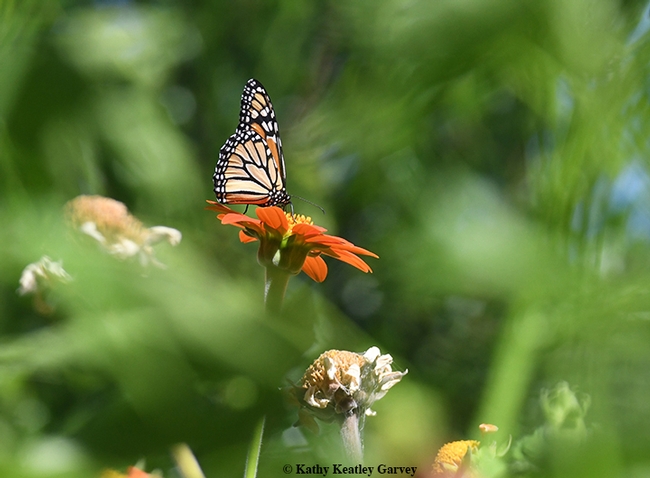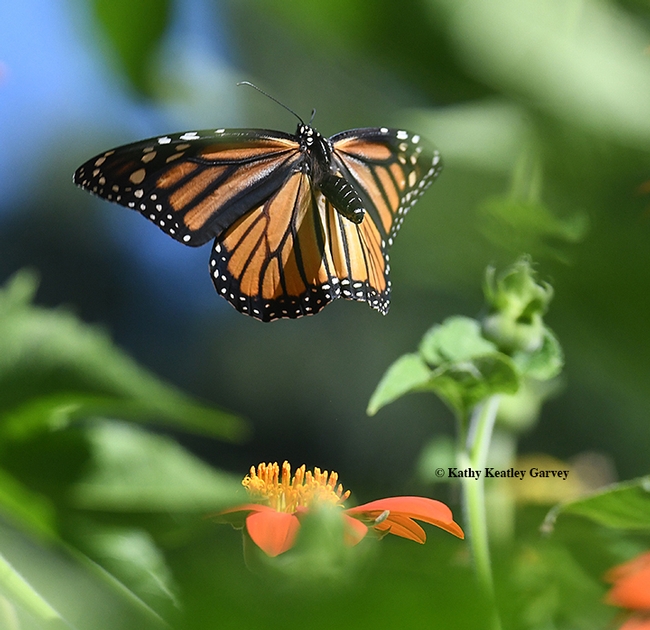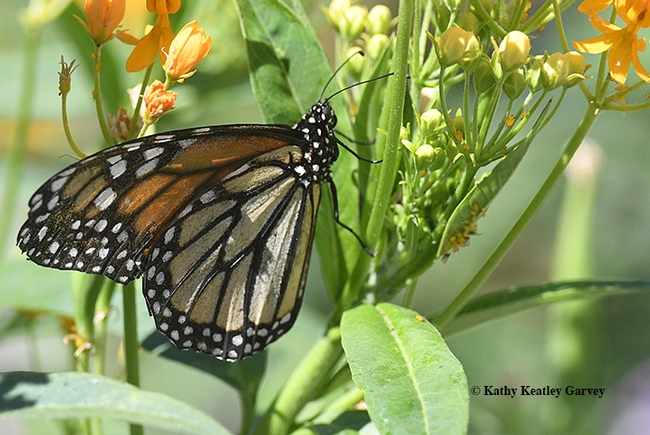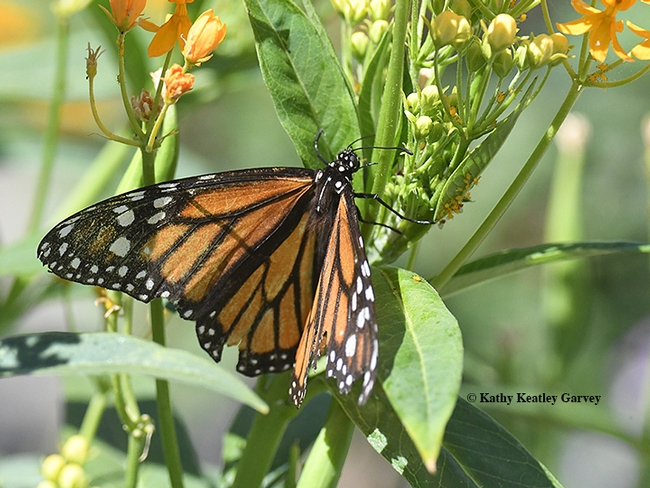A little haggard, a little worn, a little ragged, a little torn.
But there she was on Monday, Aug. 1, the first monarch of the season to lay eggs in our little pollinator garden in Vacaville, Calif.
She found the milkweed, but that was AFTER the aphids, milkweed bugs, praying mantids, assassin bugs and assorted spiders claimed it.
It's always a joy to see the majestic monarch fluttering through a pollinator garden. On Sunday, July 31, a male lingered for two hours, nectaring on the Mexican sunflower (Tithonia) as the male territorial longhorn bees tried to chase him away. No welcome mat for him! No place setting for him!
Then today, a female arrived, first stopping by the showy milkweed, Asclepias speciosa, to lay eggs and then fluttering over to the tropical milkweed, Asclepias curassavica, to lay more.
It's amazing how the monarchs, Danaus plexippus, know how to put their "resources" in multiple places. Like the idiom that cautions "don't put all your eggs in one basket," instinctively they seem to know that if they put all their resources in one place, they could lose them all. There's a better chance of offspring survival if they spread the eggs around.
We'll see.
Attached Images:

A male monarch visits the Mexican sunflower patch in the Garvey pollinator garden. (Photo by Kathy Keatley Garvey)

Oops! Time to leave. This male monarch was spooked by longhorn bees targeting him as he nectared on the Tithonia. (Photo by Kathy Keatley Garvey)

A female monarch stops at the tropical milkweed, Asclepias curassavica. (Photo by Kathy Keatley Garvey)

The female monarch spreads its wings. She ended up laying eggs on the tropical milkweed and showy milkweed. Note how tattered she is--the predators missed!(Photo by Kathy Keatley Garvey)